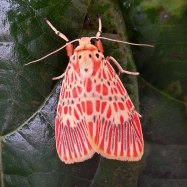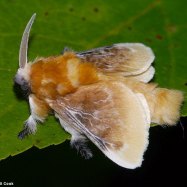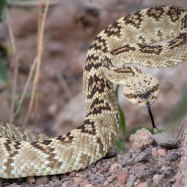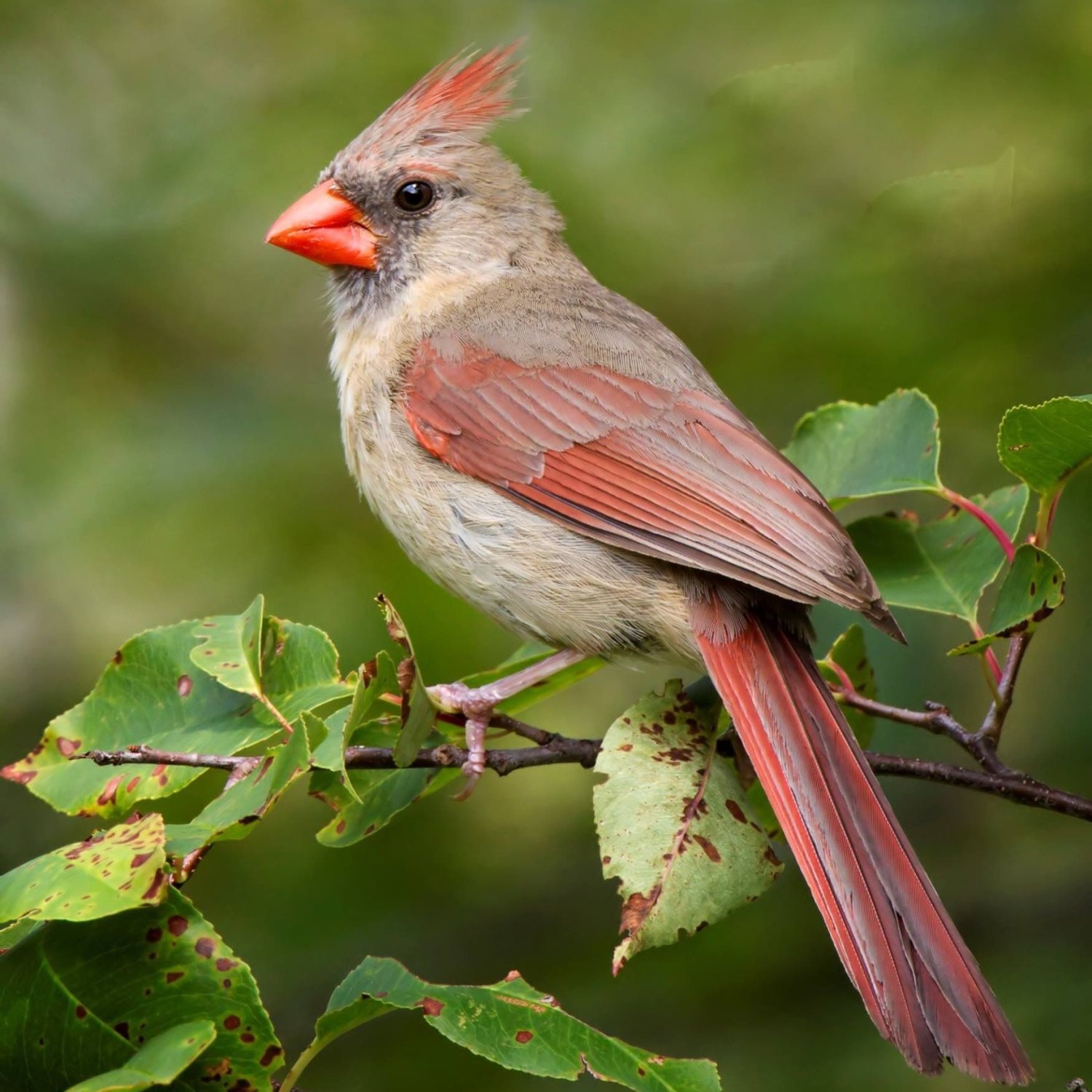
Northern Cardinal
8 to 9 inches (20 to 23 cm)
The Northern Cardinal is a striking bird known for its vibrant red feathers and sweet songs. Found in the Eastern and Midwest United States, these medium-sized songbirds belong to the Cardinalidae family and can grow up to 8-9 inches long. With its short, thick beak, the Northern Cardinal is a common sight in many backyards and parks, making it a beloved and easily recognizable species. #Nature #Wildlife #Birds
Animal Details Summary:
Common Name: Northern Cardinal
Kingdom: Animalia
Habitat: Woodlands, gardens, and shrublands
The Dazzling Northern Cardinal: A Jewel of Eastern and Central North America
The forests, gardens, and shrublands of eastern and central North America are home to a bright and captivating bird - the Northern Cardinal (Cardinalis cardinalis). Known for its stunning red color and beautiful song, this medium-sized songbird has captured the hearts of many, from birdwatchers to poets and artists.Discovering the Northern Cardinal
The Northern Cardinal, also known as the Redbird or Common Cardinal, belongs to the Animalia kingdom, Chordata phylum, and Aves class. It belongs to the Passeriformes order, meaning "perching birds," and the Cardinalidae family, which includes buntings, grosbeaks, and saltators Northern Cardinal. The scientific name of this striking bird, Cardinalis cardinalis, comes from the Latin word "cardinalis," meaning "principal" or "important," referring to the bird's bright color.This species has a wide range, covering eastern and central North America, from the United States to Canada and Mexico. It prefers living in woodlands, gardens, and shrublands, making it a common sight in both urban and rural areas. Its natural habitat includes dense bushes, thickets, and brushy areas with low vegetation, providing ample cover and food sources.
A Feast for the Eyes and Ears
The Northern Cardinal is a stunning bird, instantly recognizable due to its bright red plumage. The male has a vibrant red body, while the female has a more muted brownish-red color, both with a black face mask and a crest on the head. This coloration is essential for attracting a mate and establishing territory. But it also serves as a natural defense mechanism, as the bright red color can startle predators, giving the bird a chance to escape.Apart from its striking appearance, the Northern Cardinal is also known for its melodious song Northern Inuit Dog. Its clear, whistling notes and cheerful melodies are commonly associated with a symbol of vitality and hope. The male and female have distinct songs, with the male's being louder and more complex, often singing from a high perch to defend their territory or attract a mate.
A Versatile Diet
The Northern Cardinal's diet consists mainly of seeds and fruits, making them regular visitors to backyard bird feeders. They have a strong, thick beak, which is perfect for cracking open seeds and nuts. They have a particular preference for sunflower seeds, safflower seeds, and peanut hearts. However, they are also omnivores, feeding on insects, spiders, and snails, especially during the breeding season when they need a high protein diet.Their ability to consume a diverse range of food sources makes them adaptable to various habitats, and they can survive in residential areas as long as there is enough food and suitable cover. They also play an essential role in seed dispersal, as they eat a variety of fruits and deposit the seeds in different locations, helping with plant growth and diversity.
Life in the Wild
The Northern Cardinal is monogamous, and breeding pairs stay together for life. The breeding season for these birds varies according to location and climate, but it usually starts in early spring and can last through mid-summer. The male and female work together to build a cup-shaped nest made of twigs, grass, and leaves, usually in a dense shrub or tree.Once the nest is built, the female lays a clutch of 3-4 eggs, which she incubates for about 12-13 days while the male brings her food. After the eggs hatch, both parents take care of the chicks, feeding them insects and regurgitated seeds. The chicks fledge within 10-11 days and leave the nest to learn how to forage and survive in the wild.
Northern Cardinal in Culture
The Northern Cardinal has captured the imagination of people for years, inspiring various cultural references and beliefs. In some Native American cultures, the bird is considered a messenger, often bringing good news or omens. It is also the state bird of seven states in the United States, including Kentucky, Virginia, and West Virginia, and has been featured in numerous paintings, poems, and songs.In the realm of sports, the Northern Cardinal is also significant. It is the mascot of the St. Louis Cardinals, a Major League Baseball team, and the Arizona Cardinals, a National Football League team. The bird's majestic and fierce look has also made it a popular symbol for various universities and schools.
Threats and Conservation Efforts
The Northern Cardinal is not considered a threatened species, with a stable population estimated at tens of millions of individuals. However, like many other bird species, their habitat is affected by urbanization, deforestation, and climate change. These factors can lead to a decline in their population, as they rely on a specific habitat and food sources.Conservation efforts, such as creating backyard gardens with native plants and providing bird feeders, can help these birds thrive. Planting shrubs and bushes can provide ample cover and nesting sites, while bird feeders can supplement their diet and help them survive during harsh winters. It is essential to ensure that these efforts are sustainable and do not disrupt the natural balance.
The Northern Cardinal and NLP
The Northern Cardinal's unique characteristics, such as its coloration, songs, and adaptability, make it an interesting subject for Natural Language Processing (NLP) studies. NLP, a branch of artificial intelligence, focuses on teaching machines to understand and interpret human language. Researchers have used data from bird songs and calls, including the Northern Cardinal's, to develop algorithms that identify patterns and recognize speech.Some studies have explored the possibility of using these algorithms to classify bird songs and calls, helping researchers identify and track different bird species in the wild. This technology can also assist with conservation efforts, as it can provide valuable data on the population and distribution of birds in a particular area.
Conclusion
The Northern Cardinal is a jewel of eastern and central North America, with its vibrant color and beautiful song. This medium-sized songbird has captured the hearts of many, and it is no surprise that it has inspired various cultural references and continues to fascinate birdwatchers and researchers alike. Its versatility, adaptability, and unique characteristics make it an excellent subject for Natural Language Processing, further highlighting the importance of preserving and protecting this magnificent bird and its habitat.

Northern Cardinal
Animal Details Northern Cardinal - Scientific Name: Cardinalis cardinalis
- Category: Animals N
- Scientific Name: Cardinalis cardinalis
- Common Name: Northern Cardinal
- Kingdom: Animalia
- Phylum: Chordata
- Class: Aves
- Order: Passeriformes
- Family: Cardinalidae
- Habitat: Woodlands, gardens, and shrublands
- Feeding Method: Mainly seeds and fruits, also insects and spiders
- Geographical Distribution: Eastern and central North America
- Country of Origin: United States, Canada, Mexico
- Location: Eastern and Midwest United States
- Animal Coloration: Bright red body, black face mask, and crest on the top of the head
- Body Shape: Medium-sized songbird with a short, thick beak
- Length: 8 to 9 inches (20 to 23 cm)
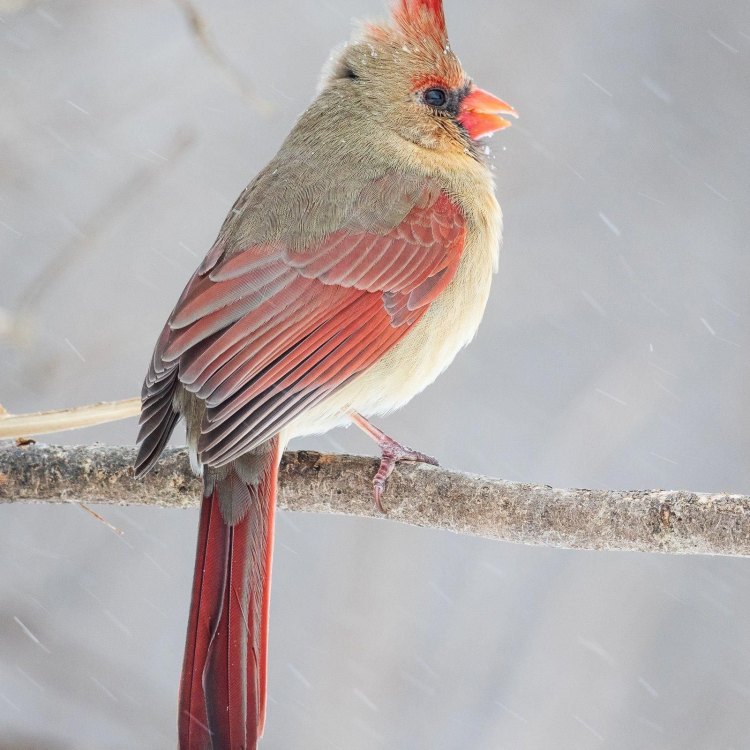
Northern Cardinal
- Adult Size: Medium-sized
- Average Lifespan: 3 to 15 years
- Reproduction: Monogamous
- Reproductive Behavior: Both male and female participate in nest building and feeding the chicks
- Sound or Call: Loud and clear whistled song
- Migration Pattern: Some populations are non-migratory, while others migrate short distances
- Social Groups: Pairs or small family groups
- Behavior: Territorial and aggressive towards intruders
- Threats: Habitat loss, pesticide use, and collisions with windows
- Conservation Status: Least Concern
- Impact on Ecosystem: Important role in seed dispersal
- Human Use: Popular backyard bird, often attracted to bird feeders
- Distinctive Features: Bright red plumage and crest on the head
- Interesting Facts: Only the male has the iconic bright red coloration; the female is duller in color
- Predator: Birds of prey, snakes, and domestic cats
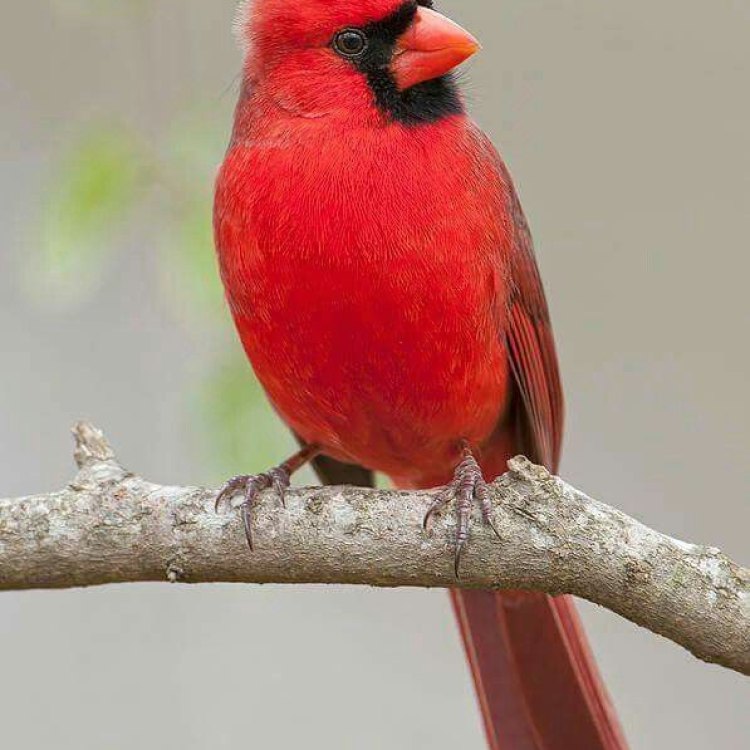
Cardinalis cardinalis
The Colorful and Charismatic Northern Cardinal: A Guide to this Iconic Bird
When one thinks of a backyard bird, the Northern Cardinal is often one of the first to come to mind. From its bright red plumage to its loud and clear song, this medium-sized bird is hard to miss. But there is much more to this iconic bird than meets the eye. In this article, we will explore the unique features of the Northern Cardinal, from its breeding behavior to its impact on the ecosystem PeaceOfAnimals.Com.The Basics: Adult Size and Average Lifespan
The Northern Cardinal, also known as the Cardinal or Redbird, belongs to the family Cardinalidae. It is a medium-sized bird, measuring around 8-9 inches in length and weighing between 1.45-1.65 ounces. The male and female are similar in size, with the male having a slightly larger crest on its head.On average, Northern Cardinals have a lifespan of 3 to 15 years in the wild. However, some individuals have been known to live up to 28 years. Factors such as habitat quality, availability of food, and predator avoidance can greatly affect the lifespan of these birds.
Breeding Behavior: Monogamy and Shared Responsibilities
One of the most intriguing aspects of the Northern Cardinal's breeding behavior is its monogamous nature Needlefish. Unlike other bird species, these birds usually mate for life. The pair remains together throughout the year, and the male is often seen accompanying the female while she forages for food.Both the male and female participate in nest building, which takes place between March and September. The nest is usually built by the female and is a cup-shaped structure made of twigs, grass, and other plant materials. The female then incubates the eggs, while the male brings food to her. Once the eggs hatch, both parents take turns feeding the chicks until they fledge, usually after 9-11 days.
Sound or Call: A Loud and Clear Whistled Song
One of the most distinctive features of the Northern Cardinal is its loud and clear whistled song. The male is the primary singer and has a repertoire of about 16 different songs. These songs vary from simple whistles to complex melodies. The male often sings to mark its territory and attract a mate.Aside from its melodic songs, the Northern Cardinal also has a variety of calls. These include a metallic chip call, a high-pitched whistle, and a low "chu-chu-chu" call. Each call serves a different purpose, from warning other birds of danger to communicating with its mate.
Migration Pattern: Non-Migratory vs. Short-distance Migration
Despite popular belief, not all Northern Cardinals migrate. Some populations, particularly those in the southern United States, are non-migratory. They stay in their home range throughout the year, while other populations in the northern parts of their range migrate short distances to avoid harsh winters.The exact timing of their migration varies depending on their location. In the northern parts of their range, they may migrate as early as August, while in the southern parts, they start their journey in October or November.
Social Groups: Pairs or Small Family Groups
Northern Cardinals are generally seen in pairs or small family groups, consisting of the breeding pair and their offspring. However, during the non-breeding season, they may form larger groups of up to 20 individuals, comprising both males and females.Pairs are highly territorial and will defend their territory vigorously against intruders. This includes other birds, humans, and even their own reflection in windows. They use visual displays, such as flapping their wings and vocalizing, to defend their territory.
Behavior: Territorial and Aggressive towards Intruders
As mentioned before, Northern Cardinals are highly territorial birds. They will fiercely defend their territory from any potential intruders, including other birds, squirrels, and even humans. Their aggressive behavior may also extend to their own reflections in windows or mirrors, as they perceive it as a threat.Aside from their territorial behavior, Northern Cardinals are also known for being quite curious. They can often be seen investigating new objects placed in their territory or visiting bird feeders and birdbaths.
Threats: Habitat Loss, Pesticide Use, and Window Collisions
Like many other bird species, the Northern Cardinal is facing numerous threats, primarily due to human activities. Habitat loss is one of the biggest threats to these birds, as urbanization and agriculture continue to destroy their natural habitats. This loss of habitat also affects their breeding success, as they rely on trees and shrubs for nesting.Pesticide use is another significant threat to the Northern Cardinal. These birds often ingest pesticides by feeding on contaminated insects or plants, which can be fatal. Pesticides also decrease the availability of insects, the primary food source for these birds.
Another danger for Northern Cardinals is window collisions. Due to their territorial behavior, they may mistake their reflection for an intruder and fly into windows. This often leads to fatal injuries or death.
Conservation Status: Least Concern, but Still in Need of Protection
According to the International Union for Conservation of Nature (IUCN), the Northern Cardinal is currently classified as "Least Concern." This means that its population is stable, and there are no immediate threats to the species' survival.However, as mentioned before, Northern Cardinals still face various challenges, and their numbers have declined in some areas. Therefore, it is essential to protect their habitats and reduce the use of pesticides to ensure their long-term survival.
Impact on Ecosystem: An Important Role in Seed Dispersal
Apart from being a beloved backyard bird, the Northern Cardinal also plays a crucial role in the ecosystem. As seed-eaters, they help disperse seeds of various plants, contributing to the growth and reproduction of those plants. They also provide a source of food for predators, such as birds of prey, snakes, and domestic cats.Furthermore, Northern Cardinals have been used in scientific studies to understand the impact of climate change on birds. As they are common and widespread, they provide valuable data on changes in population size, breeding success, and migration patterns in response to environmental changes.
Human Use: A Popular Backyard Bird
The Northern Cardinal has become a familiar sight in many backyards across North America. Their bright red plumage and melodious songs make them a popular choice for birdwatchers and backyard bird enthusiasts. Many people also attract these birds to their yards by providing bird feeders, as they are primarily seed-eaters.Some states, such as Illinois, have even chosen the Northern Cardinal as their state bird, further highlighting its popularity among humans.
Distinctive Features: Bright Red Plumage and Crest
The Northern Cardinal is undoubtedly one of the most eye-catching birds, thanks to its bright red plumage. However, what many people may not know is that only the male has this iconic coloration. The female, on the other hand, has a duller brown color with hints of red on her wings, tail, and crest.Aside from its vibrant color, the male Northern Cardinal also has a prominent crest on its head. This crest can be raised or lowered depending on its mood or to display aggression towards intruders.
Interesting Facts: The Female is Duller in Color
While the male Northern Cardinal may be famous for its bright red color, many people are surprised to learn that the female of the species is actually duller in color. This difference in coloration is known as sexual dimorphism and is common in many bird species.The reason for this difference in color is still unclear, but some theories suggest that it may serve as a form of camouflage for the female while she incubates the eggs or as a way for the male to attract a mate.
In Conclusion: A Colorful and Charismatic Bird
The Northern Cardinal is undoubtedly one of the most charismatic and beloved birds in North America. From its iconic red color and melodic songs to its unique breeding and territorial behavior, this bird has many fascinating features that make it stand out.But amidst its popularity and beauty, the Northern Cardinal also faces various threats that put its survival at risk. It is therefore essential to continue conserving their habitats and reducing the use of pesticides to ensure that these charismatic birds continue to brighten our backyards for generations to come.
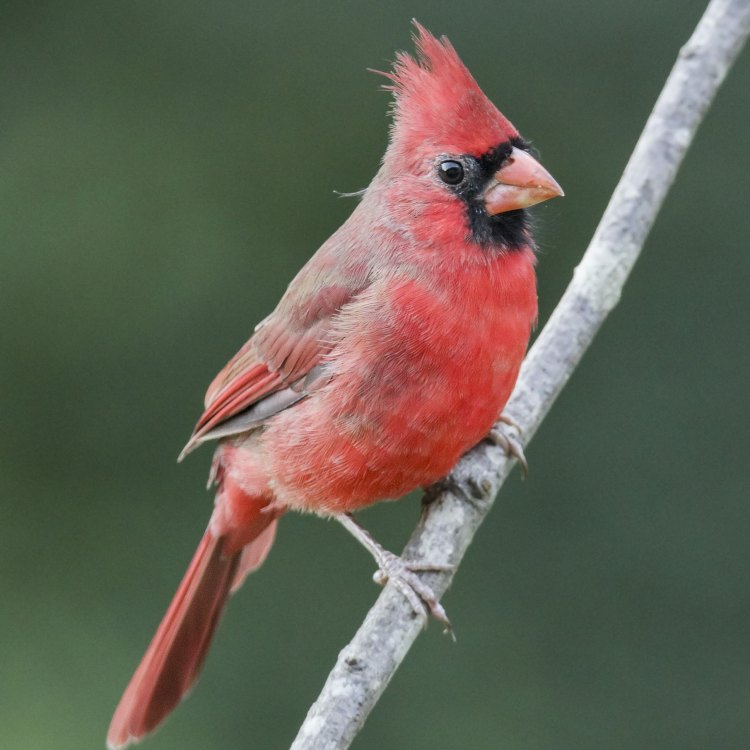
The Dazzling Northern Cardinal: A Jewel of Eastern and Central North America
Disclaimer: The content provided is for informational purposes only. We cannot guarantee the accuracy of the information on this page 100%. All information provided here may change without prior notice.


